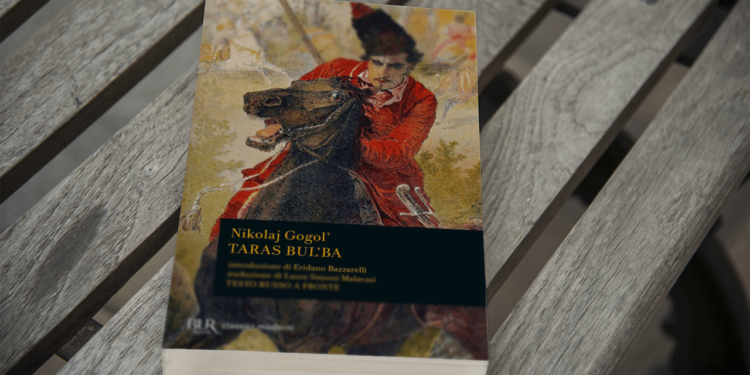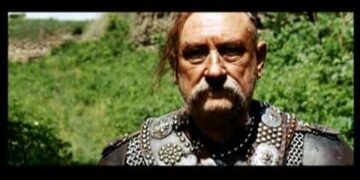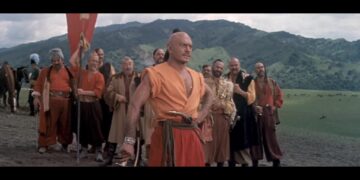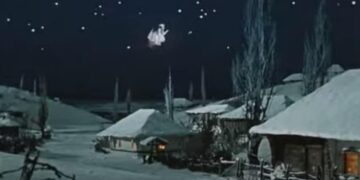Nikolai Gogol, one of the most celebrated and enigmatic figures in Russian literature, is still alive in the hearts and minds of readers today. Born on March 31, 1809, in the Ukrainian town of Sorochyntsi, Gogol’s life journey would shape his unique perspective and contribute to his unparalleled literary works. His writings continue to captivate audiences with their dark humor, vivid characters, and exploration of the human condition. In this comprehensive biography, we delve into the life, work, and lasting influence of Nikolai Gogol.
Early Life and Background of Nikolai Gogol
Gogol’s early life was marked by tragedy and uncertainty. He was born into a family of Ukrainian Cossack descent, his father a minor government official, and his mother a descendant of Polish nobility. Gogol’s father died when he was just fifteen, leaving the family in financial hardship. Despite these challenges, Gogol’s passion for literature and storytelling began to blossom during his childhood. He immersed himself in the works of Ukrainian folk tales and Russian literature, nurturing his imagination and honing his writing skills.
Nikolai Gogol’s Works: An Overview of His Literary Career
Gogol’s literary career can be divided into three distinct periods: the Ukrainian period, the Petersburg period, and the final period. In his early works, such as “Evenings on a Farm Near Dikanka” and “Mirgorod,” Gogol draws heavily from Ukrainian folklore, infusing his stories with supernatural elements and vibrant characters. These tales captured the essence of Ukrainian village life, showcasing Gogol’s deep connection to his homeland.
During his Petersburg period, Gogol’s writing took on a more satirical and critical tone. Works like “The Government Inspector” and “Dead Souls” satirize the bureaucracy and corruption prevalent in Russian society. Gogol’s sharp wit and keen observations earned him both acclaim and controversy, as his critique of the social and political landscape challenged the status quo.
In the final period of his career, Gogol’s writing took a more introspective turn. His works became more philosophical and mystical, with “The Nose” and “The Overcoat” standing as prime examples. These stories explore themes of identity, isolation, and the human struggle to find meaning in a rapidly changing world. Gogol’s unique blend of dark humor and profound insights continues to resonate with readers today.
The Influence of Nikolai Gogol’s Works
Gogol’s works have left an indelible mark on Russian literature and beyond. His innovative storytelling techniques, vivid characterizations, and exploration of the human psyche have inspired countless writers and artists. Fyodor Dostoevsky, a fellow Russian literary giant, acknowledged Gogol as his mentor and praised his influence on his own works. Gogol’s ability to blend satire, surrealism, and psychological depth has influenced generations of writers, from Franz Kafka to Gabriel Garcia Marquez.
Beyond literature, Gogol’s impact extends to the world of theater and cinema. His play “The Government Inspector” continues to be performed worldwide, highlighting the timeless relevance of its themes. Numerous adaptations of Gogol’s works have graced the silver screen, with the 1962 film adaptation of “Taras Bulba” being a standout example. Gogol’s stories have proven to be a rich source of inspiration for filmmakers, allowing his narratives to be brought to life in visually stunning ways.
Intriguing Tidbits about Nikolai Gogol’s Life
Nikolai Gogol’s life was filled with intriguing tidbits that add a layer of mystique to his already enigmatic persona. One such tidbit is his fascination with the occult and the supernatural. Gogol was known to consult fortune tellers and dabble in spiritualism, seeking answers to life’s mysteries. This interest in the unknown often found its way into his writings, adding an additional layer of depth and intrigue.
Another intriguing aspect of Gogol’s life is his complex relationship with religion. While he was raised in the Russian Orthodox faith, Gogol’s beliefs underwent a significant transformation throughout his life. He became increasingly critical of the Church’s role in society and developed a unique spiritual philosophy that blended elements of mysticism and pantheism. These philosophical musings can be seen in his later works, where he grapples with questions of faith and existentialism.
Gogol’s personal life also had its fair share of mysteries. He remained unmarried throughout his life, fueling speculation about his romantic inclinations. Some biographers suggest that Gogol may have been homosexual, while others argue that he simply prioritized his writing above all else. Regardless of the truth, Gogol’s love life remains a subject of fascination and speculation.
Nikolai Gogol’s Love Life and Friendships
Gogol’s love life and friendships were an integral part of his personal and creative journey. While he never married, Gogol formed deep connections with several women throughout his life. One of his closest relationships was with his friend and confidante, the writer Countess Alexandra Tolstaya. Their correspondence provides insights into Gogol’s thoughts and emotions, shedding light on the man behind the words.
Gogol’s friendships extended beyond romantic relationships. He cultivated meaningful connections with fellow writers and intellectuals, including Alexander Pushkin and Vissarion Belinsky. These friendships served as sources of inspiration and intellectual exchange, shaping Gogol’s views on literature, politics, and society. The impact of these relationships can be seen in his works, which often reflect the collective ideas and debates of his social circle.
Nikolai Gogol’s Financial Situation: Rich or Poor?
The question of Gogol’s financial situation has long been a topic of debate among scholars and biographers. While Gogol experienced periods of financial stability, he also faced significant financial hardships throughout his life. His father’s death left the family in a precarious position, and Gogol struggled to make ends meet, relying on financial support from friends and patrons.
Gogol’s financial situation improved briefly after the success of “Dead Souls,” but mismanagement and unfortunate investments led to further financial difficulties. He was forced to rely on the generosity of friends and patrons to sustain himself. Despite these challenges, Gogol remained dedicated to his writing, refusing to compromise his artistic vision for financial gain.
Unforgettable Quotes by Nikolai Gogol
Gogol’s writings are replete with unforgettable quotes that continue to resonate with readers today. One such quote comes from his play “The Government Inspector”: “The scoundrel is not he who asks for a bribe, but he who gives it.” This quote encapsulates Gogol’s biting social critique, highlighting the corruption and moral decay he sought to expose.
Another memorable quote comes from his short story “The Overcoat”: “What is important is not the coat itself but what it represents.” This quote captures the deeper themes of identity and societal perception that pervade Gogol’s works. He challenges the reader to look beyond superficial appearances and consider the true essence of an individual.
These quotes, along with many others, serve as a testament to Gogol’s mastery of language and his ability to distill complex ideas into concise and impactful statements.
Locations in Nikolai Gogol’s Books: A Journey through his Literary Settings
One of the distinct features of Gogol’s works is his vivid portrayal of settings. From the Ukrainian countryside to the bustling streets of St. Petersburg, Gogol’s stories transport readers to a variety of locations. In “Taras Bulba,” Gogol paints a vivid picture of the Ukrainian steppe, with its vast landscapes and fierce Cossack warriors. The setting becomes a character in itself, shaping the narrative and evoking a sense of time and place.
Similarly, St. Petersburg serves as a backdrop for many of Gogol’s works, particularly during his Petersburg period. The city’s bustling streets, grand architecture, and social hierarchies provide fertile ground for Gogol’s satirical observations. Through his meticulous attention to detail, Gogol brings the city to life, immersing readers in the world of 19th-century Russia.
The First Book by Nikolai Gogol: An Analysis
Gogol’s first book, “Evenings on a Farm Near Dikanka,” marked the beginning of his literary career and set the stage for his subsequent works. This collection of Ukrainian folk tales showcases Gogol’s deep connection to his homeland and his ability to weave together elements of fantasy and reality. The stories are imbued with supernatural creatures, colorful characters, and a sense of whimsy that captures the essence of Ukrainian village life.
One of the standout stories in the collection is “The Night Before Christmas.” This tale follows the misadventures of a mischievous blacksmith who encounters a host of supernatural beings on Christmas Eve. Through this story, Gogol showcases his mastery of blending folklore with his unique storytelling style, creating a narrative that is both enchanting and thought-provoking.
The Last Book by Nikolai Gogol: A Reflection on his Final Work
Gogol’s final work, “Dead Souls,” is a reflection of his evolving writing style and his exploration of complex themes. The novel tells the story of Chichikov, a man who travels through the Russian countryside buying deceased serfs in order to exploit a legal loophole. Through this satirical premise, Gogol delves into themes of greed, corruption, and the dehumanization of individuals in a society driven by material gain.
“Dead Souls” remains unfinished, with only the first part of the novel completed. Gogol’s decision to burn the second part of the manuscript has puzzled scholars and readers alike. Some speculate that Gogol’s dissatisfaction with the direction of the story led to its destruction, while others believe that it was a symbolic act, reflecting his internal struggles and disillusionment with the world.
The Screen Adaptation of Taras Bulba: Bringing Gogol’s Story to Life
Gogol’s epic tale “Taras Bulba” has been brought to life on the silver screen, captivating audiences with its sweeping landscapes and compelling characters. The 1962 film adaptation, directed by J. Lee Thompson, remains one of the most notable versions of Gogol’s story. The film stars Yul Brynner as the eponymous Cossack warrior, Taras Bulba, and showcases the tumultuous relationship between father and son against the backdrop of war and rebellion.
The screen adaptation captures the essence of Gogol’s narrative, transporting viewers to the Ukrainian steppe and immersing them in the world of 16th-century Cossack life. The film’s stunning cinematography and powerful performances breathe life into Gogol’s characters, making “Taras Bulba” a must-watch for fans of the writer’s works.
Other Artists Who Inspired Nikolai Gogol
Gogol’s creative genius was not confined to his own imagination; he drew inspiration from a wide array of artists and thinkers. One such influential figure was the German writer E.T.A. Hoffmann, whose tales of the supernatural and exploration of the human psyche resonated deeply with Gogol. Hoffmann’s unique blend of fantasy and psychological depth served as a source of inspiration for Gogol’s own works, particularly his later stories.
Another artist who left a lasting impact on Gogol was Francisco Goya, the renowned Spanish painter. Goya’s vivid and often haunting imagery struck a chord with Gogol, who incorporated elements of the grotesque and the macabre into his own writing. Gogol’s ability to evoke a sense of unease and explore the darker aspects of human nature can be attributed, in part, to Goya’s influence.
5 Other Writers and Books to Read if You Liked Nikolai Gogol
If you enjoyed Nikolai Gogol’s works and are looking for similar literary experiences, here are five other writers and books that are sure to captivate your imagination:
- Fyodor Dostoevsky – “Crime and Punishment”: Like Gogol, Dostoevsky delves into the depths of the human psyche, exploring themes of guilt, morality, and redemption.
- Edgar Allan Poe – “The Tell-Tale Heart”: Poe’s macabre tales and exploration of the human mind make for a haunting reading experience, reminiscent of Gogol’s darker works.
- Mikhail Bulgakov – “The Master and Margarita”: Bulgakov’s satirical masterpiece weaves together elements of fantasy and reality, much like Gogol’s own works.
- Gabriel Garcia Marquez – “One Hundred Years of Solitude”: Marquez’s magical realism and exploration of family, love, and fate echo the timeless themes found in Gogol’s writings.
- Franz Kafka – “The Metamorphosis”: Kafka’s surreal and allegorical tale of transformation resonates with Gogol’s exploration of identity and the absurdity of existence.
Buying Guide and Gift Ideas for Nikolai Gogol Fans
If you’re a fan of Nikolai Gogol or know someone who is, here’s a buying guide and some gift ideas to enhance your Gogol experience:
- Complete Works of Nikolai Gogol: A comprehensive collection of Gogol’s works, allowing you to delve into his stories and writings at your leisure.
- Gogol-inspired Artwork: Decorate your living space with artwork inspired by Gogol’s vivid imagery and characters. Look for prints or paintings that capture the essence of his stories.
- Gogol-themed Merchandise: From t-shirts to mugs, there is a wide range of Gogol-themed merchandise available. Show off your love for the writer with a unique and stylish item.
- Gogol’s Biographies: Explore Gogol’s life and works through in-depth biographies that shed light on his creative process and the influences that shaped him.
- Literary Tours: Embark on a literary journey through the locations that inspired Gogol’s stories. Join a guided tour or create your own itinerary to immerse yourself in the world of Gogol.
Conclusion: The Legacy of Nikolai Gogol
Nikolai Gogol’s life, work, and influence continue to fascinate and inspire readers around the world. His unique style, blending elements of satire, realism, and the grotesque, paved the way for future generations of writers. Gogol’s exploration of the human condition, his keen observations of society, and his ability to create unforgettable characters have left an indelible mark on Russian literature.
As we delve into Gogol’s works, explore the artists who influenced him, and discover other writers who capture similar themes, we gain a deeper appreciation for his genius. Whether you are a lifelong fan or new to Gogol’s writings, his legacy will continue to captivate and intrigue, reminding us of the power of literature to illuminate the depths of the human soul.











